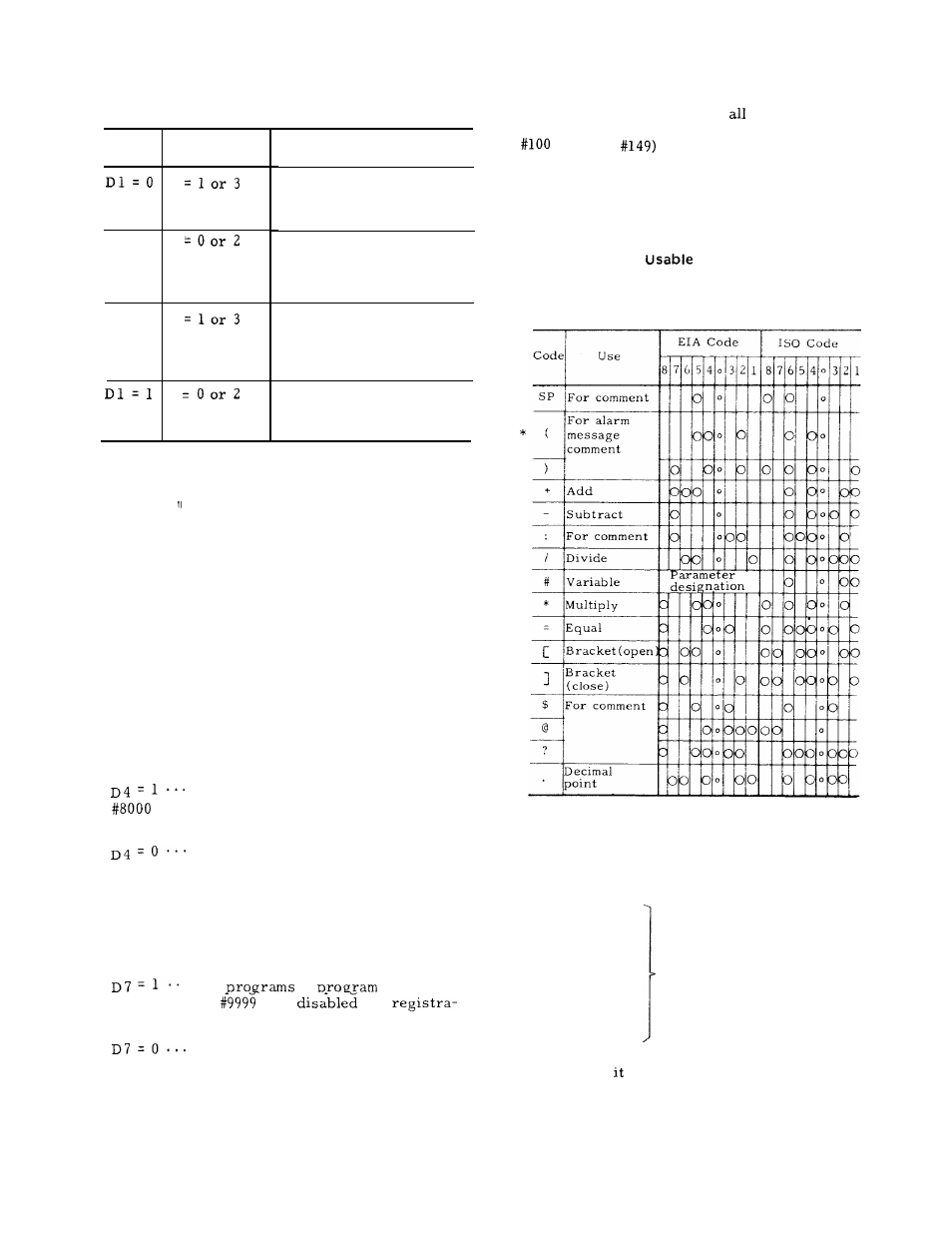Yaskawa J50M Instructions User Manual
Page 122

2.11.10 CONSIDERATIONS AND REMARKS
FOR
USER MACROS
(Cent’d)
Setting
#6004
D 1 = O
D l = l
System Vari-
able #3003
When Single Block
Switch is on
Operational command,
control command, and
general commands do
not stop.
Operational command and
control command do not
stop .
General commands
stop .
Operational command,
control command. and
general commands do
not stop.
Operational command,
control command, and
general commands stop.
(6) Relationship with operational
B l o c k ’ S k i p
The slash /” character used in the right-hand
of an operational expression or in brackets
is assumed to be the operator for quotient.
It does not mean the optional skip .
(7) Setting and Parameter of Program
N u m b e r
Classification
A. Disabling of Program Registration, Erase, and Edit
The following setting is permitted to protect the
registered user macros and subprograms from
inadvertent destruction:
Setting
Number
#6004
The programs of program numbers
through #8999 are disabled for registra-
tion, erase, and edit.
Registration, erase, and edit are
enabled.
Parameter
Number
#6021
. The
of
n u m b e r s
#9000
through
are
tion, erase, and edit.
Registration,
enabled.
for
erase,
and edit are
(8)
E f f e c t s o f R e s e t O p e r a t i o n
A .
A reset operation resets
local variables
(#l through #33) and part of common variables
(
through
to “blank. “
B .
A reset operation resets the user-macro
multiple call state and the multiple DO loop state,
making the program pointer return to the pro-
gram head.
(9)
S p e c i a l C o d e s
in User Macro Body
A .
The special codes listed below may be used
in the user macro body:
*
*
*
*
*
N o t e s :
1.
For the hole pattern of EIA code of the char-
acter attached with an asterisk, the pattern
shown above is standard.
H o w e v e r , other pat-
terns may be specified by using the following
parameters :
#6110 . . . [
#6111 . . .
1
#6112 . . . *
#6113 . . . =
#6114 . . . (
#6115 . . )
Hole pattern
setting parameter
Read the desired hole pattern in the binary
value, convert
into the decimal equivalent,
and set the parameter.
For example,
the hole pattern shown
below is set as “ 152”:
114
